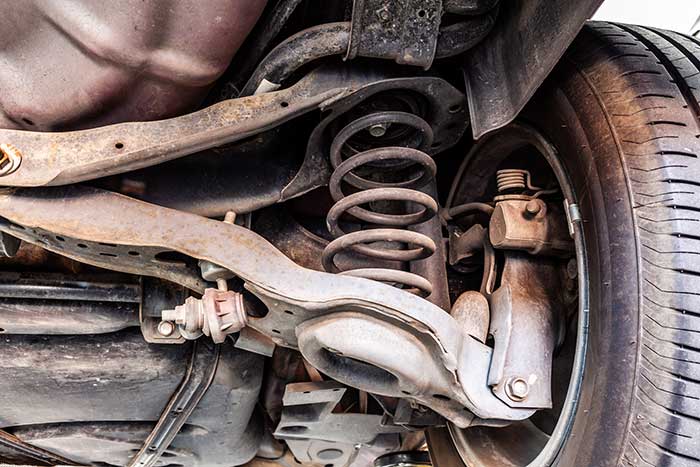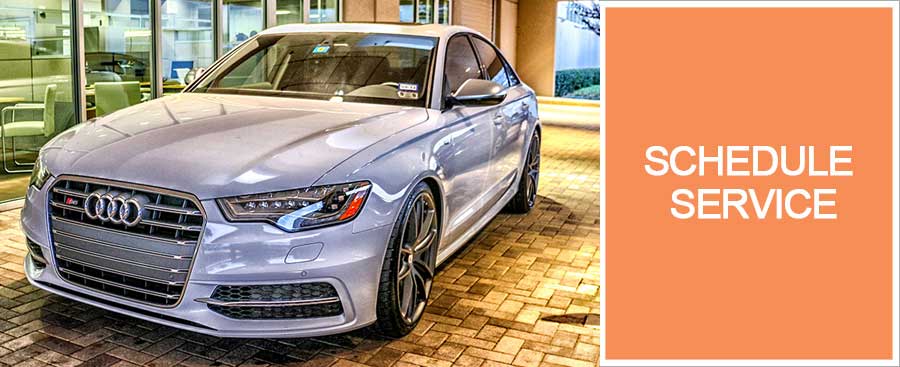Your shocks and struts are part of your car’s suspension. If you drive with worn or damaged shocks or struts, not only will you find your drive is not so smooth, but you are also at risk of accidents. This is because when your shocks or struts need replacing it becomes more difficult to stop and make safe sharp turns. Stopping is even worse when driving in wet or slippery conditions. As a result, it’s important for you to recognize when it’s time to replace these components. Since these parts contribute to the stability of your car, you might notice some subtle changes that worsen over time.
Here’s an overview of how your suspension works and signs it’s time for new shocks or struts.
How Your Suspension Works
As mentioned, your shocks and struts are part of your suspension, the main system that helps your car remain stable when driving, turning, braking, and accelerating. As well, should you suddenly reach an uneven surface, your suspension helps absorb the vibrations and force. Most vehicles today use either shocks, struts, or both. If you drive a European model, your suspension is made of lightweight aluminum parts. Aluminum is softer, and therefore it can be easier to bend the parts on a sudden impact such as hitting a curb or pothole.
The difference between shocks and struts is that shocks work independently of the rest of the system, while struts are part of a single structural unit. Either way, both play the same role in helping stabilize your car. They ensure your vehicle’s tires maintain contact with the pavement and avoid having a very bouncy and dangerous ride.
How Long Do Shocks and Struts Last?
Car maintenance and parts replacement are usually best measured using miles. As well, how you drive, where you drive and what you carry all contribute to the lifespan of these parts. If you drive on well-maintained roads without any weight and are a cautious driver, your parts will last from 75,000 to 90,000 miles. However driving on rough, unpaved roads, carrying heavy loads, and driving more aggressively can shorten that life span to as little as 40,000 to 50,000 miles or less.
Warning Signs You Need New Shocks or Struts
In hand with the rough estimates for recommended mileposts to replace your struts or shocks, you can watch for these warning signs that you have wear and tear on your suspension system:
- An unstable feeling on highways: If you find your car feels unstable when driving at highway speeds, or you feel what might be described as moving up and down, this is often a sign you have suspension issues. Keep in mind, it might be subtle, but still noticeable.
- Pulling or tipping feeling on turns: If you take a sharp turn and feel wobbly like you might take a roll, this pulling or tipping feeling is a sure sign your suspension is shot.
- Front end dives when braking: If you have to brake fast and it seems the car jerks forward or even takes a nosedive; this is a sign of shock or strut issues.
- Rear-end squat when you accelerate: Like the nosedive when you break, the opposite occurs when you accelerate with the rear feeling like it squats when you speed up.
- Tires bouncing: If you hit a bump or uneven road, and your tires seem to continue to bounce or clunk, this is a sign your suspension needs attention.
- Uneven tire wear: With so much imbalance due to worn shocks or struts, you will begin to see a change to tire wear. Since the car isn’t kept in consistent contact with the road, it shows in the treads with uneven wear and often balding areas.
- Leaking fluid: Worn or damaged shocks or struts can have broken seals allowing the internal fluids to leak.
Any of these signs are a warning it is time to visit your auto repair shop.
Replacing Shocks or Struts
When you visit your auto repair shop, they will do a diagnostic to check your entire suspension system. If they do recommend replacing your shocks or struts, keep in mind if these components are damaged, other parts might be affected. It’s best to have a complete overhaul of your suspension system if your auto professional advises it. Otherwise, you will continue to experience worsening issues and it will cost you more in the long run.
Schedule your appointment at one of our three locations today! Contact us online here.


